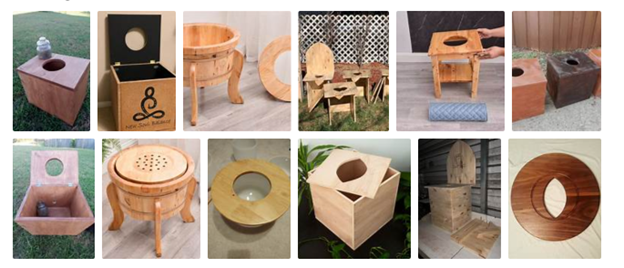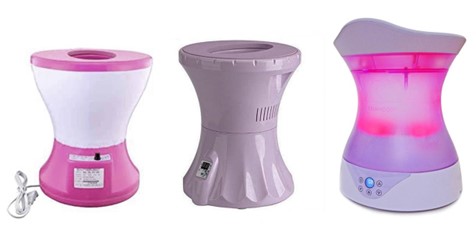April 11, 2023
Perhaps you already saw Part 1 of this two-part series on a little-known but intriguing method for caring for your pelvic floor, treating pelvic floor dysfunction, increasing blood flow and orgasm quality, managing menstrual pain, solving hemorrhoid issues, and much more – for both men and women. It's called “steaming” and you can read Part 1 here.
Jessica Pratt is the person who has been teaching me all about steaming, and her company LEIAMOON is where I got a steaming seat for me and my wife. But as you can imagine, when Jessica tells people she designed a home electronic vaginal steam seat, she says she's usually met with a look of bewilderment.
Jessica and her husband Andrew are the founders of LEIAMOON, a company that makes increasingly popular and easy-to-use steaming “seats.” Recently, I asked Jessica to write a two-part article series on vaginal steaming – and its male equivalent, lingam steaming – because even though steaming is slowly gaining recognition in the health industry, most people are still unaware of this practice. I've only recently discovered and begun implementing it myself.
After carefully clarifying what vaginal steaming is, and calmly reiterating that it was not thought up by a social media trend influencer, Jessica says those who were initially perplexed by her project and interest in steaming seats begin to listen up. Learning that vaginal steam baths are rooted in traditional wisdom that’s been passed down for generations to relax and honor the most sensitive, life-giving parts of the body seems to change people's perceptions quickly.
As I talked about in Part 1, while vaginal steaming (often referred to as yoni steaming, or when men do it lingam steaming) offers many reproductive and overall health benefits, lingam steaming serves a similar purpose for men. I now have a steaming unit of my own at home, and a couple of times a month I've been steaming my nether regions while reading a book, praying, meditating, and even DuoLingo language learning practice. The process is not only calming, but it appears to promote overall pelvic floor function and bowel regularity.
Whether you are a man or woman, hopefully after reading Part 1 of this series you understand more about what vaginal and lingam steaming is and the reasons for choosing to steam at various life stages. Now, in this installment, Jessica is going to cover everything from the best herbs to use for steaming, to the different types of steamers available, to the proper techniques for steaming your nether regions safely and effectively. She will start by presenting the primary concerns that she hears when people are new to steaming and addressing those concerns.
So if you're ready to learn more about how to incorporate vaginal steaming into your self-care routine and discover the potential benefits that this practice has to offer, then read on.
Steaming: Dissecting 4 Main Concerns
While vaginal or lingam steaming can offer many benefits, it's not without concerns.
Some of these are unfounded or based on misconceptions, while others can be alleviated with the right approach and tools. However, there are also situations where vaginal steaming can pose a real danger.
In this section, I’ll go over four main concerns that often arise and offer insights on how to approach vaginal steaming safely and responsibly, so you can enjoy the benefits without the risks.
Concern #1: The Vagina is Self-Cleaning. So Why Would You Need to Steam It? And Why Should Men Know This Too?
Let's get one thing straight: the vagina is a self-cleaning wonderland.
Your body is an amazing machine that naturally produces secretions and discharge to clean out the uterus and vagina throughout the menstrual cycle. In fact, most OBGYNs will tell you that the vagina is like a “self-cleaning oven” that doesn't require any special interventions to stay clean. And they’re right!
But here's the thing: vaginal steaming does not imply that the vagina is dirty, bad, or in need of cleaning.
Rather, it is a form of supporting the body's already incredible natural functions, and a self-care tool that emphasizes the reverence of and connection to this oft-neglected part of the female anatomy. It's about honoring and assisting the natural cycles of your body–not trying to alter, replace, or shame them!
Steaming can offer more comfort, ease, and efficiency, especially when it comes to menstruation. Oftentimes, steam helps to break up and release stagnant matter, meaning old blood and tissue from your uterus, left behind from your previous period. And the moist, herb-infused heat of the steam feels really good. It can be soothing, relaxing, opening (both physically and emotionally), and cathartic. None of this is to say the body is incapable of cleansing itself without steaming, but steaming can assist in the process and provide additional benefits, and shift the attitude around the menstrual cycle to one of celebration.
Men have the opportunity to play a part in this shift in attitude too! Men, there’s great value in understanding more about vaginal steaming and the menstrual cycle. Regardless of your gender, all people owe their existence to the miraculous pathway of the female reproductive tract – the cosmic portal through which humanity has arrived on this earth. Unfortunately, there has been an epidemic of misunderstanding, shame, and trauma around this part of the female anatomy. Men, you can help change that by deepening your awareness of womb wellness and respecting the cyclical nature of the women in your lives. By supporting women to care for their vaginal and womb spaces, you are not only promoting their reproductive health but also fostering more harmonious relationships. When a woman feels supported in this way, she is better able to care for herself and can be more vulnerable with her partner, leading to increased intimacy and better relationships overall.
This is not just about physical benefits – although many women report increased libido after steaming and couples report better sex – it's also about emotional support. By creating a safe and supportive environment for women to connect with their most sensitive areas, the sense of well-being and comfort can extend beyond the physical. This is true in partnerships, but also in all of our relationships with women. Imagine a world where women feel understood, empowered, and supported in their cyclical nature – that's a world I believe vaginal steaming can help to facilitate.
Concern #2: How is Steaming Different than Douching?
Because vaginal steaming is mistakenly viewed as a reactionary measure to the idea that your vagina is inherently dirty, it is often confused with douching.
However, the two practices are worlds apart.
Douching, which involves squirting a mixture of possibly chemical-laden fluids directly into your canal, really is an attempt to clean a “dirty” vagina by force. It’s invasive, not recommended by most doctors, and, unlike vaginal steaming, known to cause infections and other problems. 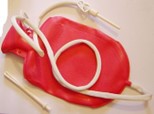 Steaming, on the other hand, is gentle, non-invasive, and doesn’t involve touching your vagina at all. If you really want to draw comparisons to other practices, vaginal steaming is far more akin to a sitz bath, which is a therapeutic soak of the anus and genitals in a shallow basin of warm water. Sitz baths are a common recommendation from doctors, and are similar to vaginal steaming in that they are external, gentle, and warming. And unlike douching, sitz baths and vaginal steaming are both done to support the body's natural functions, rather than try to clean something that is already self-cleaning.
Steaming, on the other hand, is gentle, non-invasive, and doesn’t involve touching your vagina at all. If you really want to draw comparisons to other practices, vaginal steaming is far more akin to a sitz bath, which is a therapeutic soak of the anus and genitals in a shallow basin of warm water. Sitz baths are a common recommendation from doctors, and are similar to vaginal steaming in that they are external, gentle, and warming. And unlike douching, sitz baths and vaginal steaming are both done to support the body's natural functions, rather than try to clean something that is already self-cleaning.
Vaginal steaming is not about trying to “fix something that isn't broken.” But that doesn't mean you can't take steps to support your body’s natural functions and promote overall health and well-being. When done correctly, vaginal steaming can be a safe, effective, and empowering practice that supports your body's natural rhythms.
Concern #3: Steam is Hot, and You Can Burn Yourself!
 Yes. Dealing with hot steam in any capacity involves a risk of burning. So does lighting a match, boiling water on your stove, touching a hot metal object, or going into a steam room that’s too hot. Does that mean you shouldn’t ever use fire, cook, or take a hot bath? Of course not. But just as you would take adequate precautions in doing any of these things, there are steps you can take to make sure you don’t burn yourself while steaming.
Yes. Dealing with hot steam in any capacity involves a risk of burning. So does lighting a match, boiling water on your stove, touching a hot metal object, or going into a steam room that’s too hot. Does that mean you shouldn’t ever use fire, cook, or take a hot bath? Of course not. But just as you would take adequate precautions in doing any of these things, there are steps you can take to make sure you don’t burn yourself while steaming.
Check the Temperature
Before beginning your session, it's essential to check the temperature of the steam. You can wave your hand over the top of your pot or steam seat to gauge the temperature, or you can use a thermometer. If the steam is too hot, let it cool down until it's comfortable. And never try to steam over an actively boiling pot!
Ensure You're Not Contraindicated
You might be familiar with a well-known incident of a woman who burned herself during vaginal steaming, but she had a stage four prolapsed vagina and she also sat directly over boiling hot water. It’s important to note that vaginal steaming is not recommended under certain circumstances. Consulting with an experienced steam practitioner will help ensure you're not contraindicated.
In general, you should not pelvic steam if (women and men):
- You have an injury or open wound in your pelvic area
- You have genital piercings
And, for women only:
- You’re on your period or you are experiencing spontaneous bleeding
- You’re wearing an IUD*
- You’re pregnant or think you are pregnant**
*This may depend on the type of IUD, duration of steam, and other factors. If you have an IUD but still want to steam, always consult your qualified care provider first for the best advice.
**One possible, though controversial, caveat to this may be steaming for labor – something that I touched on in Part 1 of this blog series.
Consider Your Method
There are various ways to steam and home accessories that can make your practice easier and safer. However, it's essential to maintain a good distance between the steam source and your pelvis, approximately 7″ or more above the steam. There are people who use a sitz bath seat for their steam setup, which is a shallow plastic basin that fits atop your toilet seat bowl. However, using a makeshift sitz bath in your toilet is not recommended, primarily due to sanitary concerns, the short distance between the steam and your underbody, and simply not wanting all you associate with a toilet to disrupt your sacred self-care session.
An electronic steam seat with built-in temperature control can be a safer option, that also gives you the freedom to set up in any comfortable, quiet space of your choosing. With electronic seats, be sure it is ETL (Edison Testing Laboratories, an equipment safety certification program), RoHS (Restriction of Hazardous Substances in Electrical and Electronic Equipment), and FCC (Federal Communications Commission) certified. FCC certification ensures that a product meets strict standards for low to no radio frequency emissions, which is also important for your overall health and safety.
It’s important to remember that steam is hot, and you can burn yourself if you're not careful. However, with the right precautions, you can minimize the risk of burning and enjoy the benefits of pelvic steaming safely.
Concern #4: Will Vaginal Steaming Negatively Affect Your Vaginal Microbiome?
You might have heard some outspoken commentators in the media claim that steaming is bad for your vaginal microbiome and pH balance.
While it's true that maintaining a healthy vaginal microbiome is important, the idea that vaginal steaming will harm it is unfounded and illogical. I want to spend more time on this concern to help you understand this fact.
What is the Vaginal Microbiome?
The vaginal microbiome is the community of bacteria and other microorganisms that live in the vagina. It's crucial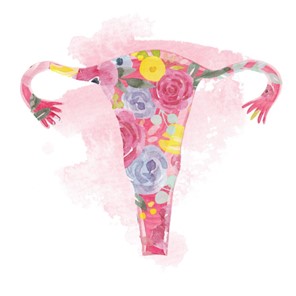 for maintaining vaginal health and preventing infections. However, there's no singular definition of what a “healthy” vaginal microbiome looks like. There is a lot of debate about what constitutes “good” and “bad” bacteria, and some things that affect your microbiome negatively might affect another woman’s positively. So any claims about activities and their effects on your vaginal microbiome should be taken with a grain of salt, as the complexity and variability of the microbiome make it difficult to definitively link any one practice to negative effects on vaginal health. This is especially true for vaginal steaming, and here’s why.
for maintaining vaginal health and preventing infections. However, there's no singular definition of what a “healthy” vaginal microbiome looks like. There is a lot of debate about what constitutes “good” and “bad” bacteria, and some things that affect your microbiome negatively might affect another woman’s positively. So any claims about activities and their effects on your vaginal microbiome should be taken with a grain of salt, as the complexity and variability of the microbiome make it difficult to definitively link any one practice to negative effects on vaginal health. This is especially true for vaginal steaming, and here’s why.
There is No Evidence that Vaginal Steaming Harms the Microbiome
While there is no clear definition of a “healthy” microbiome, we do know how to identify an “unhealthy” one through clinical diagnoses such as yeast infections and bacterial vaginosis.
There are plenty of well-known, extensively studied causes for these conditions, but vaginal steaming is not one of them. Millions of women have tried vaginal steaming, but cases of vaginal infection resulting from the practice are curiously absent, both in medical literature and in public discourse. On the contrary, countless professional practitioners recommend vaginal steams for a wide scope of reasons and have continuously logged overwhelmingly positive results. Fertility expert Dr. Marc Sklar, for example, has stressed that after years of prescribing vaginal steams, he has never seen them cause yeast infections, bacterial vaginosis, or any negative effects on the vaginal microbiome.
Factors that Affect the Vaginal Microbiome
On the other hand, many everyday activities are known to disrupt the vaginal microbiome. These include using tampons or scented soaps, having sex, taking antibiotics, using intrauterine devices (IUDs), and using hormonal birth control; as well as stress, hormonal changes, invasive vaginal rejuvenation surgeries, or even something as benign as sitting in a hot tub or swimming pool. Many of these activities are far more intrusive than a gentle vaginal steam. Some are ordinary daily practices, while others, despite their known risks, are nonetheless recommended by all kinds of doctors and other practitioners.
The Vaginal Microbiome is Resilient and it’s Your Body
It's important to note that vaginal and lingam steaming should not be used as a substitute for medical treatment if you have a specific pelvic health issue. But experts agree that even with the plethora of things out there that may affect your vaginal biome every day, most vaginas remain healthy most of the time. This is because the microbiome tends to bounce back quickly from temporary imbalances caused by external factors. You get to choose what to put in, on, or around your pelvis and weigh the risks and benefits of doing so. And all things considered, there’s no real reason to believe steaming poses any greater risk to your biome and body than a wide variety of other everyday activities.
Methods of Steaming
From the simplicity and privacy of home-based steaming to the luxurious, professionally-guided sessions at a spa, there's a steaming experience tailored to meet your needs.
Understanding the aspects of each steaming method will allow you to choose which one best aligns with your personal preferences, lifestyle, and comfort level. The methods below also apply to lingam steaming, as more spas have begun to offer this service.
Traditional Methods
In certain cultures, vaginal steam baths have been used for generations by traditional practitioners, midwives, and herbalists. While each tradition has its own ins and outs, the general method is some form of squatting over a bowl or pot of hot water with herbs in it (see my full step-by-step guide below). This is a simple, inexpensive way to steam that allows you the comfort and privacy of doing it in your own home.
 However, it does require some effort and caution. You need to carefully boil a large pot of water (typically 6-8 cups), add a significant amount of herbs, and transport the hot vessel to a place where you can squat with it. A typical steam session lasts 20-40 minutes, so squatting the entire time may not be feasible for everyone. You may need to shift positions to keep your body comfortable and relaxed, and you won’t have any control over the steam temperature. Nonetheless, this a time-tested, thrifty, and effective method, and a great starting point to try out the practice!
However, it does require some effort and caution. You need to carefully boil a large pot of water (typically 6-8 cups), add a significant amount of herbs, and transport the hot vessel to a place where you can squat with it. A typical steam session lasts 20-40 minutes, so squatting the entire time may not be feasible for everyone. You may need to shift positions to keep your body comfortable and relaxed, and you won’t have any control over the steam temperature. Nonetheless, this a time-tested, thrifty, and effective method, and a great starting point to try out the practice!
Steaming at a Spa
 On the other end of the spectrum, vaginal steaming at spas is all the rage these days and can offer you a luxurious experience. Spas typically have a more full-on configuration with plush, custom-designed thrones, a relaxing atmosphere, and trained attendants who set everything up for you. However, the royal treatment requires you to make a special trip out, comes with a price tag (typically anywhere from $75 to $175 per steam session), and may not provide the same level of privacy as steaming at home. And given that many women are using the same seats over and over again, it can come with sanitation risks, depending on the level of cleanliness at the particular spa.
On the other end of the spectrum, vaginal steaming at spas is all the rage these days and can offer you a luxurious experience. Spas typically have a more full-on configuration with plush, custom-designed thrones, a relaxing atmosphere, and trained attendants who set everything up for you. However, the royal treatment requires you to make a special trip out, comes with a price tag (typically anywhere from $75 to $175 per steam session), and may not provide the same level of privacy as steaming at home. And given that many women are using the same seats over and over again, it can come with sanitation risks, depending on the level of cleanliness at the particular spa.
Upgraded Home Accessories
With the recent rise in popularity of vaginal steaming, many innovative options have appeared that can help you find a middle-of-the-road option between traditional steaming and making a full spa day of it.
Here’s a breakdown of what’s out there, along with the pros and cons.
Home or Artisinally Crafted Seats and Stools
Home-crafted seats and stools are one option for vaginal steaming at home.
These are typically made of wood and are designed to have a hole in the surface where the steam can rise. They can be used in conjunction with a pre-heated pot of water with herbs or a hot plate with a pot of herbs and water on top.
These are a step up from squatting over a pot and come in a wide spectrum of quality, price points, and customization options–from a basic box to intricate works of art! However, they can be bulky and not very portable, with limited control over the steam temperature. And although less cumbersome than squatting, they can still be uncomfortable, and the nicer ones can be pricey, ranging from $200 to $500.
Hybrid Sitz Baths
Hybrid sitz-baths are another option for at-home steaming.
These are repurposed or slightly modified plastic inserts that you add hot water and herbs to, then place in your toilet for steaming.
While they are cheap and easy to use, with prices usually under $30, there are some significant cons. Sanitation is a concern since you are on a toilet, it’s not recommended to let the steam rise from a plastic container, and the risk of burning is higher due to the relatively short distance between the steam and your underside. As such, many experts do not recommend this method for steaming.
Home Electronic Steam Seats
Home electronic steam seats offer a modern and easy-to-use approach to vaginal steaming that eliminates the need for a pot of boiling water or a bulky wooden seat.
They are prefabricated home appliances that utilize an electronic heating element for the water and herbs.
Compared to traditional vaginal steaming methods, electronic seats are less cumbersome and more efficient, requiring minimal water and herbs and heating up faster. Depending on the model, they may also offer increased control over steam temperature and/or cushioned, contoured seats for added comfort.
However, there is a wide spectrum of quality for these seats, and cheaper options can have issues with reliability, functionality, and comfort. The price range for electronic seats typically falls between $100 and $300, making them a more affordable option than spa treatments but still more expensive than a pot of water or a sitz bath. Another concern is the nature of materials in some models, which may contain unknown additives. This is especially a concern for keeping the herbal steam free from impurities. If you decide to go this route, it's important to do your research and choose a high-quality seat to ensure safety and effectiveness.
The LEIAMOON Steam Seat
As a designer and cofounder of LEIAMOON, I have firsthand experience with the challenges of creating a high-quality home electronic steam seat.
When my husband and I started designing the LEIAMOON steam seat in 2017, there were very few options available on the market, and none that met our standards for quality, safety, and design. We worked tirelessly to develop a seat that features only the highest caliber materials, is free of any potentially harmful chemicals, holds the water and herbs in a high-quality stainless steel cup, and offers users patented technology to maintain unparalleled control over the temperature of the steam.
LEIAMOON steam seats also offer additional unique features, such as the inclusion of true near-infrared/red light LEDs for added health benefits, and an attachment for facial steaming. We wanted to create a seat that is not only functional but also aesthetically beautiful, suitable for women of all shapes and sizes, and easy to use.
Wait, did you say facial steaming?
You bet! If you're looking for a way to improve your skincare routine, facial steaming is a popular practice with numerous benefits. By using warm steam, you can open up your pores and make it easier to remove impurities from your skin. You can also add soothing herbs like chamomile or calendula, which can be especially helpful if you have dry or irritated skin. Other herbs may be beneficial for nasal passages and overall respiratory wellness. Additionally, facial steaming can increase circulation, giving you a healthy glow.
The LEIAMOON facial steam attachment is a unique tool that can enhance the benefits of facial steaming with herbs. We designed it as a separate attachment for the steam seat base so you can get even more use out of the LEIAMOON system. One of its key features is a wide opening diameter, which provides full-face exposure during the steaming process. And unlike most other standalone facial steamers, it was designed specifically for use with loose dried herbs, like the LEIAMOON Signature steam blend. Not to mention, you can also turn on the NIR/red light LEDs during facial steam for additional benefits, such as mood elevation and smoother skin.
While there are other home electronic steam seats available on the market, none offer the special combination of features and benefits that LEIAMOON does. We are proud to have developed a product that we believe provides an easy, comfortable, high-quality steaming experience. We hope that it can help women around the world come back to their bodies and improve their overall health and well-being.
The Choice is Yours!
Ultimately, the decision as to how, when, and where to steam depends on individual preferences, budget, and convenience. If you’re opting for the spa experience, do your research and make sure it’s a clean and reputable facility! If you steam at home: use caution, don’t burn yourself, and make sure that you are not contraindicated for steaming. You can keep it simple with a traditional method, or browse the many options out there for accessories to enhance your experience.
How to Steam at Home
Ready to give steaming a try?
Here’s how to get started at home. Keep in mind, while I am referring to vaginal steaming here, the same guidelines apply to men practicing lingam steaming.
Plant Allies: Herbs for Steaming
First, choose your herbs!
For thousands of years, people have used plants and herbs to support well-being, and vaginal steaming is no exception. By infusing the steam with essential oils, herbs can purify and cleanse the vaginal area, leaving you feeling refreshed and rejuvenated. 
With so many herbs to choose from, it's important to find the right mixture for your needs. A few popular choices include mugwort, calendula, rose, and yarrow. You can also consult with an herbalist or browse preselected herb mixtures (see “Herbs” section). Just remember, the quality of the herbs you choose directly affects the quality of your experience. So opt for vibrant, organic plants that are hand-harvested and solar-dried for maximum benefit.
Jessica's Step-by-Step Guide
Once you have your herbs picked out, here are the steps to follow:
- Bring approximately 4 cups of clean, filtered water to a soft boil.
- Stir in ¼ cup to ½ cup of herbs, steeping them in the water.

- Transfer the herb-infused water to an approximately 8” diameter bowl, at least 4” deep, placed on the floor in the space where you’ve chosen to steam.
- Wave your hand over the steam to gauge the safest distance to hover over the bowl. Be sure to choose a distance that does not feel too hot to avoid any potential burning.
- Remove your underwear and squat over the pot, opening yourself to the steam. You can switch between kneeling, squatting, child’s pose, or anything in between, positioning your body for maximum comfort. There are special seats designed to make vaginal steaming safer and more comfortable.
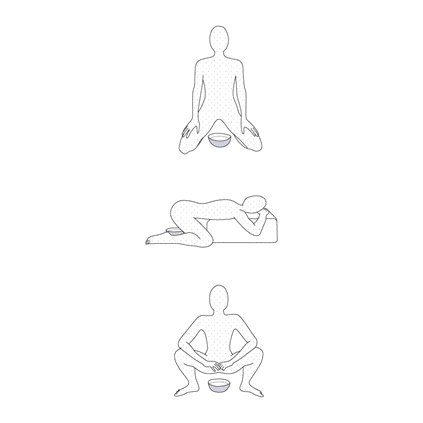
- You can wear a long skirt or blanket around your waist to create a loose container for the steam to rise from the bowl to your underbody. I recommend wearing socks to keep your feet warm, as well as keeping yourself covered and warm from the waist up.
- Steam for about 20-30 mins, using this time to deeply relax in whatever way you feel. Read, journal, meditate, and enjoy!
- Stand up slowly and dry off with a towel. Spend some time resting and reflecting, wrapped in your blanket, being careful not to expose yourself to cool drafts or temperature changes.
When to Steam
Depending on your specific scenario, vaginal steam baths are typically done prior to the menstrual phase of your cycle, or just after. Here are some guidelines to keep in mind:
- Steaming before menstruation can help relax the uterus and its contents before the expulsion of the endometrial lining.
- Steaming after menstruation may help cleanse and clear the uterus and vagina of any remaining matter at the end of the period.
- Changes in your vaginal discharge and menstruation after vaginal steaming are normal cleansing reactions, as the heat naturally thins mucus and clears stagnation. Inform an experienced practitioner if you have any unusual discharge or response to steaming.
- It's important to note that vaginal steaming is not a substitute for medical treatment, and it's always a good idea to talk to your healthcare provider if you have any medical concerns before steaming.
After your first steam, you can generally expect to feel immediately relaxed, more in sync with your womb space and vagina, rejuvenated, confident, and receptive to your feminine creativity. Intense emotional release during a steam session is also very common. You might laugh or cry, and all are welcome!
A Last Word from Jessica
More and more women are experiencing the benefits of steaming every day. And more and more men are deepening their understanding of the cycling female reproductive system, how to better support the women in their lives, and how to relax their own sacral areas. Still, the informational landscape of this time-honored tradition is rife with nuance, misconceptions, and conflicting opinions.
In Part 1 of this article series, I explored the origins of steaming, its traditional beliefs and practices, and who might steam and why. Then in this installment, I covered concerns/misconceptions, the wide variety of steaming methods available, and an easy-to-follow guide for DIY steaming at home. Hopefully, it has been insightful, comprehensive, and empowering.
As women, we don’t often get (or give ourselves) the opportunity to spend focused time on our vaginas in our own space and on our own terms. And while it may seem awkward at first, making vaginal steaming a regular practice can have profound effects on your ability to relax, ground, and connect with your cycles. Whether you are post-period, postpartum, trying to get pregnant, menopausal, or just giving your most sensitive area some TLC, vaginal steaming has something to offer. If you found benefit from this article, and you’re not contraindicated for steaming, I encourage you to give it a try!
Summary
I want to start by thanking Jessica and Andrew for helping to educate not only my audience but myself.
LEIAMOON set out to make this ancient self-care practice easily accessible, safe, and of the highest quality for any modern woman or man in their own home. I hope that their guide has provided you with valuable information and insights into the potential benefits of vaginal and Lingam steaming, as well as practical tips and advice on how to incorporate this practice into your own self-care routine.
Here's a recap of what Jessica covered in this article:
- While the vagina is self-cleaning, steaming can help support the body's natural cycles and is a fantastic self-care tool for women to utilize.
- Men have the opportunity to play a part in reversing the epidemic of misunderstanding, shame, and trauma around the female anatomy by supporting the women in their lives to care for their womb spaces, while learning to relax their own sacral areas.
- Steaming should not be confused with douching – steaming is gentle, non-invasive, and doesn’t involve touching your genitals at all.
- There are precautions you should take before steaming, such as checking the temperature so you do not burn yourself and also considering which method of steaming would be best for you.
- The idea that vaginal steaming will harm your natural vaginal microbiome in any way, shape, or form is unfounded and illogical.
- Some different methods of steaming include the traditional method (squatting over a pot), steaming at a spa, or using artisanally crafted seats and stools or electric seats in the comfort of your own home.
- There is a certain time frame that is considered most optimal for vaginal steaming, depending on your focus. Vaginal steam baths are typically done prior to the menstrual phase of your cycle, or just after.
- Herbal steaming involves infusing steam with herbs to purify and cleanse the pelvis area. (I also like and have been using the tea herbs from Kauai Farmacy for steaming.)
If you're interested in trying vaginal or lingam steaming for yourself, I encourage you to do your own research and consult with a healthcare professional to ensure that this practice is right for you. Additionally, I do recommend using high-quality herbs and steamers such as the LEIAMOON, and following proper safety protocols to minimize any potential risks.
I'd love to hear more about if you've used any of LEIAMOON‘s steaming products if you already engage in steaming, and which benefits you've noticed since adding it to your regular routine. Do you have any questions for Jessica or Andrew, or any other personal experiences/stories about steaming you'd like to share? Drop them down below in the comments section, I try my best to read them all and reply when I can.



